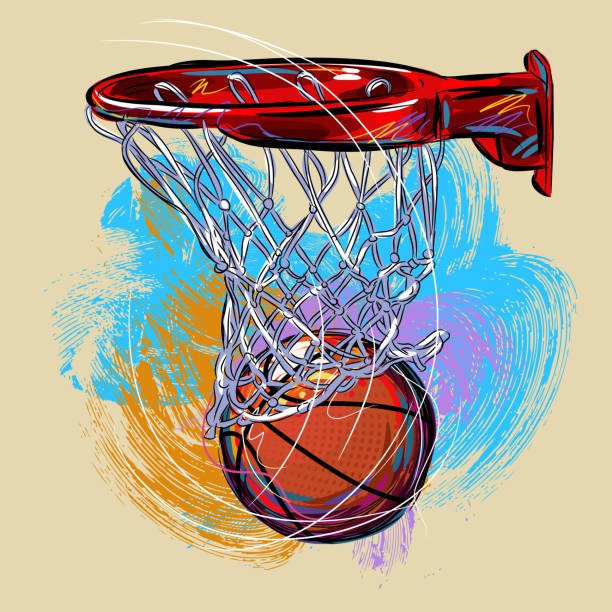Table of Contents
Drawing:cul23ybyzfm= Basketball scenes or players can be a rewarding experience for artists of all skill levels. Whether you’re aiming to capture the action on the court or create a portrait of your favorite player, understanding the fundamentals of drawing basketball can significantly enhance your artwork. In this comprehensive guide, we will explore the essential techniques, tips, and common mistakes to avoid when drawing basketball scenes.
Understanding Basketball Anatomy Drawing:cul23ybyzfm= Basketball
Drawing:cul23ybyzfm= Basketball Before diving into drawing basketball players or scenes, it’s crucial to understand the anatomy of the sport. Basketball involves dynamic movements and poses, and having a solid grasp of the game’s anatomy will help you create more accurate and engaging drawings. Drawing:cul23ybyzfm= Basketball
The Court Layout
A basketball court has specific dimensions and features that you should be familiar with. Drawing:cul23ybyzfm= Basketball The court is divided into two main sections: the offense and defense zones. Key elements include the three-point line, free-throw line, and the hoop. Incorporating these elements into your drawings can add authenticity to your artwork. Drawing:cul23ybyzfm= Basketball
Player Anatomy and Movement
Basketball players exhibit a range of dynamic movements, from dribbling and shooting to defending and jumping. To accurately depict these movements, study the human anatomy, focusing on muscle groups and joint articulation. Observing real-life players or watching games can provide valuable insights into how bodies move during a game Drawing:cul23ybyzfm= Basketball.
Essential Drawing Techniques

With a basic understanding of basketball anatomy, you can apply various drawing techniques to bring your artwork to life. Here are some essential techniques to consider:
Sketching the Basic Structure
Drawing:cul23ybyzfm= Basketball Start by sketching the basic structure of your drawing. Use light, loose lines to outline the main components of your scene or player. For a player, begin with the head, torso, and limbs. For a scene, outline the court and key elements such as the hoop and backboard. Drawing:cul23ybyzfm= Basketball
Capturing Dynamic Poses
Basketball is a high-energy sport, and capturing dynamic poses is crucial for conveying the intensity of the game. Pay attention to the angle and position of each body part, ensuring that the pose reflects the action. Use reference images or videos to study different poses and movements. Drawing:cul23ybyzfm= Basketball
Adding Details and Textures
Once you have the basic structure and pose in place, begin adding details and textures to your drawing. Focus on the player’s uniform, facial expressions, and the texture of the basketball. Pay attention to the folds and creases in the clothing, as well as the texture of the court surface. Drawing:cul23ybyzfm= Basketball
Shading and Lighting
Shading and lighting play a significant role in creating depth and dimension in your drawing. Observe how light interacts with the player and the court, and use shading techniques to replicate these effects. Consider the light source and how it casts shadows on different parts of the scene.
Common Mistakes to Avoid
Even experienced artists can make mistakes when drawing basketball scenes. Here are some common pitfalls to watch out for:
Proportional Errors
One common mistake is drawing figures with incorrect proportions

. Ensure that the player’s body parts are proportionate and accurately represent their movement. Use reference images to check proportions and make necessary adjustments.
Lack of Perspective
Perspective is essential for creating a realistic sense of depth in your drawing. Avoid drawing elements flatly; instead, incorporate perspective techniques to depict distance and depth. This is particularly important when drawing the court and players in motion.
Ignoring Details
Details can make or break a drawing. Avoid rushing through the detailing process, as this can result in a lack of realism and engagement. Take the time to carefully render details such as facial expressions, textures, and court markings.
Tips for Improving Your Basketball Drawings
To enhance your basketball drawings, consider the following tips:
Practice Regularly
Like any skill, drawing improves with regular practice. Dedicate time to draw basketball scenes and players consistently. The more you practice, the more comfortable you’ll become with capturing the nuances of the sport.
Study Real-Life Players
Observing real-life players can provide valuable insights into how they move and interact with the ball. Attend games, watch matches, or study video footage to better understand the intricacies of basketball movement and action.
Use Reference Images
Reference images can be a valuable tool for accuracy and inspiration. Gather images of basketball players, courts, and equipment to help guide your drawing process. Analyze these images to understand how different elements are depicted.
Seek Feedback
Sharing your work with others can provide constructive feedback and help you identify areas for improvement. Join art communities, participate in critique sessions, or seek advice from fellow artists to enhance your skills.
Conclusion
Drawing basketball scenes and players requires a blend of technical skills and a deep understanding of the sport. By focusing on anatomy, mastering essential techniques, and avoiding common mistakes, you can create compelling and dynamic basketball artwork. Remember, practice and observation are key to improving your drawing skills. Embrace the challenges and enjoy the creative process of capturing the excitement of basketball on paper.
FAQs
Q: How can I improve my understanding of basketball movement for drawing?
A: Study real-life players, watch games, and use reference images to observe how players move and interact with the ball. Practice sketching different poses and movements to enhance your understanding.
Q: What are some common mistakes to avoid when drawing basketball scenes?
A: Common mistakes include proportional errors, lack of perspective, and ignoring details. Ensure your figures are proportionate, incorporate perspective techniques, and pay attention to details such as facial expressions and textures.
Q: How can I add depth and dimension to my basketball drawings?
A: Use shading and lighting techniques to create depth and dimension. Observe how light interacts with the subject and replicate these effects in your drawing. Incorporate perspective to depict distance and depth accurately.
Q: What are some tips for improving my basketball drawing skills?
A: Practice regularly, study real-life players, use reference images, and seek feedback from others. Consistent practice and observation will help you develop your skills and create more accurate and engaging drawings.




